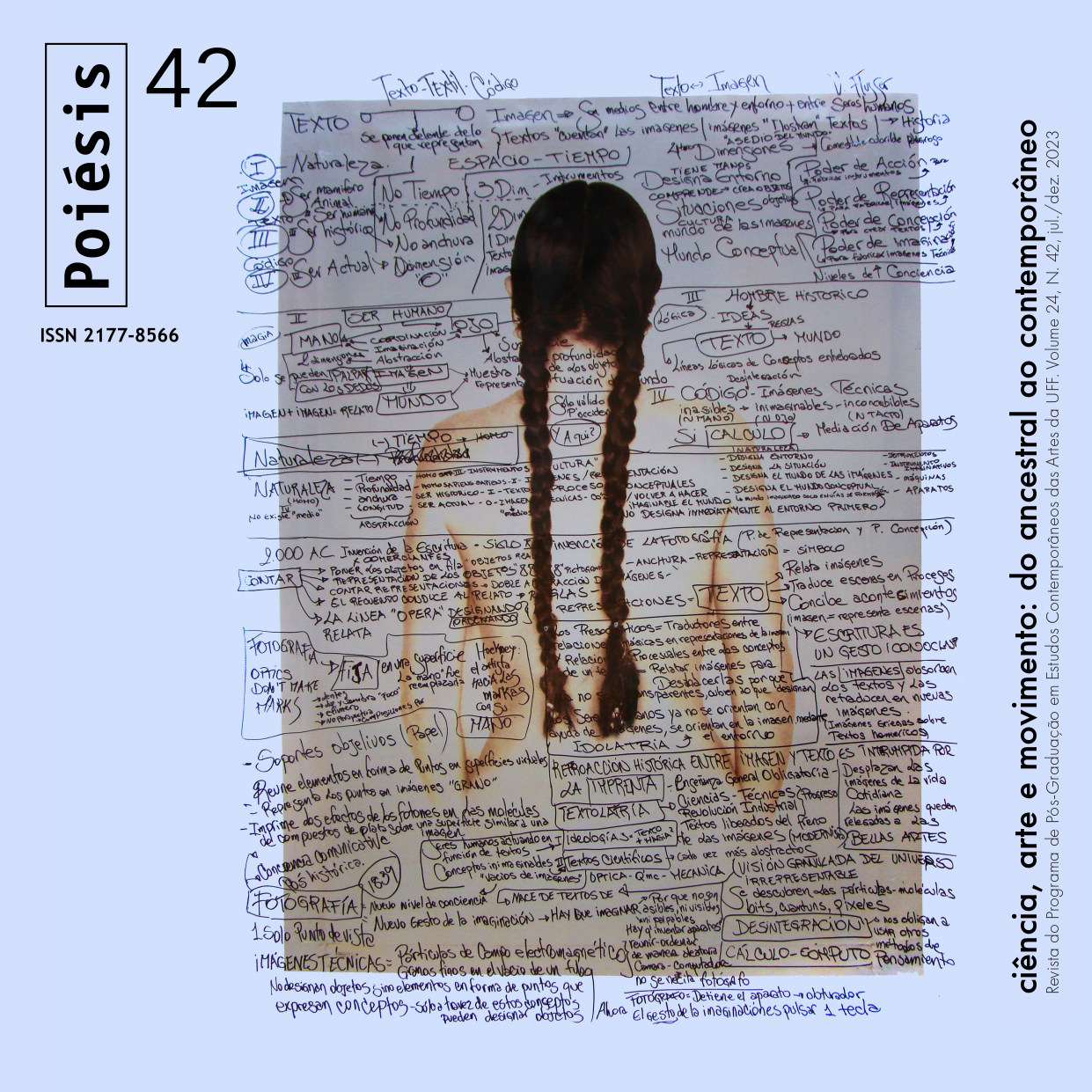ENTORPECIMENTO POR MEDIAÇÃO
UM ELEMENTO DA DIVULGAÇÃO DE NOTÍCIAS FALSAS?
DOI:
https://doi.org/10.22409/poiesis.v24i42.61294Keywords:
Mídia, Entorpecimento, Notícias Falsas, CiênciaAbstract
The article discusses the way in which scientific knowledge has lost importance in the context of fake news that takes over contemporary processes of mediation in network. There is a questioning about the extent to which the processes of numbing by the excess of information can be responsible for the alienation of the user, resulting in the anesthesia of his critical sense. This debate takes into account examples of confusion between fiction and reality in the history of media, such as the escape from the cinema room when the train approaches the foreground in the first Lumière projections, the transmission of War of the Worlds on CBS and the confusion between the chatterbot Eliza and a real person.
Downloads
References
BAITELLO Júnior, Norval. Mídia como droga. In: A carta, o
abismo, o beijo. São Paulo: Paulus, 2018. p. 117-124.
BASTOS, Marcus. Depois da realidade consensual, In:
PRIOSTE, Marcelo (Org.). Redes, séries e nós. Porto
Alegre: Editora Fi, 2022.
BASTOS, Marcus. Sobre transmissões: pontes entre os
séculos 19 e 21. Revista Científica/FAP, v. 19, n. 2, p. 140-
, jul./dez. 2018. Disponível em: https://periodicos.
unespar.edu.br/index.php/revistacientifica/article/
view/2436 Acesso em: 25 jul. 2022
CANETTI, Elias. Massa e Poder. São Paulo: Companhia
das Letras, 2009.
ECO, Umberto. Viagem na irrealidade cotidiana. Rio de
Janeiro: Nova Fronteira, 1984.
ERNST, Wolfgang. Sonic Time Machines: Explicit Sound,
Sirenic Voices, and Implicit Sonicity. Amsterdam: Amsterdam
University Press, 2016.
FREUD, Sigmund. A psicologia das massas e a análise do
eu. São Paulo: Companhia das Letras, 2011.
GEERTZ, Clifford. A interpretação das culturas. 1 ed, Rio
de Janeiro: LTC, 2008.
MACHADO, Arlindo. A arte do vídeo. 2 ed. São Paulo:
Brasiliense, 1990.
MACHADO, Arlindo. O sujeito na tela: Modos de
enunciação no cinema e no ciberespaço. São Paulo:
Paulus, 2007.
MAREK, Michael. Como o rádio se tornou um culto entre
os alemães. Deutsche Welle, 2020, n.p, Disponível em:
https://www.dw.com/pt-br/como-o-r%C3%A1dio-setornou-
um-culto-entre-os-alem%C3%A3es/a-56032947
Acesso em: 25 jul. 2022.
MCLUHAN, Marshall. The gadget lover: Narcisuss as
narcosis, In: MCLUHAN, Marshall. Understanding Media:
The extensions of men. Cambridge (MA): MIT Press, 1994.
p. 45-52.
MURRAY, Janet. Hamlet on the Hollodeck. Cambridge
(MA): MIT Press, 1997.
SCONCE, Jeffrey. Haunted Media: Electronic Presence
from Telegraphy to Television. Durham: Duke University
Press, 2000.
SIEGERT, Bernhard. Cultural Techniques: Grids, filters, doors
and other articulations of the real. New York: Fordham
University Press, 2015.
Downloads
Published
Versions
- 2024-03-12 (2)
- 2023-12-30 (1)
How to Cite
Issue
Section
License
Copyright (c) 2023 Marcus Bastos

This work is licensed under a Creative Commons Attribution-NonCommercial-NoDerivatives 4.0 International License.
Authors who publish in Revista Poiésis agree to the following terms:
- The authors keep the copyright and grant the journal the right of first publication. The work is automatically licensed under the Creative Commons Attribution License, which enables its sharing as long as the authorship and initial publication in this journal are acknowledged.
- Authors are allowed and encouraged to distribute online their work published in Revista Poiésis (in institutional repositories or in their own personal page), since this can generate productive interactions, as well as increase the impact and citation of the published work (See The Effect of Free Access).


